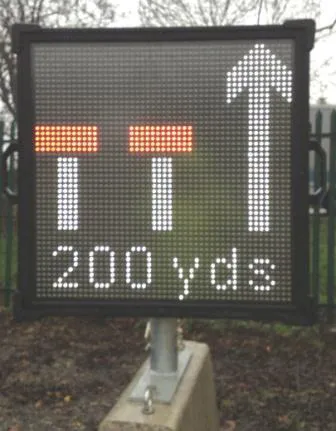The Institute of Advanced Motorists (IAM) has expressed concern that widespread confusion exists amongst UK drivers on how best to use SMART motorways. These were officially introduced around this time in 2014 to replace Managed Motorways as the solution to the UK’s congested major routes. However concerns have been raised over the safety of the SMART motorways. England’s first all-lane running motorway, without a hard shoulder, was the 2.5km stretch of the M25 between junctions 23 and 25.
Complete schemes
April 13, 2015
Read time: 4 mins
The 5125 Institute of Advanced Motorists (IAM) has expressed concern that widespread confusion exists amongst UK drivers on how best to use SMART motorways. These were officially introduced around this time in 2014 to replace Managed Motorways as the solution to the UK’s congested major routes. However concerns have been raised over the safety of the SMART motorways. England’s first all-lane running motorway, without a hard shoulder, was the 2.5km stretch of the M25 between junctions 23 and 25.
Complete schemes, with variable speed limits and all-lane running, are in operation on the M1 (Junctions 10-13), M4 (Junctions 19-20), M5 (Junctions 15-17), M6 (Junctions 4-10a), M42 (Junctions 3a-7) and M62 (Junctions 26-29/30) and with part -time hard shoulder running on the M42 since 2006.
In addition all systems use lane control, overhead gantries and emergency refuge areas. Part of the concern raised by motorists was the safety of those who had broken down on a motorway with no hard shoulder, and the increase in distances between safety refuges.
The IAM conducted a survey on the introduction of SMART motorways last year, which found 71% of drivers said they would feel less safe on a motorway with no hard shoulder than a motorway with one. Some 40% of respondents said they were sceptical that new monitoring systems on SMART motorways, such as traffic detectors and CCTV, would protect them in the event of stopping in a running lane.
Sarah Sillars IAM chief executive officer said, “There are many different motorway users out there and some are still confused and nervous about using SMART motorways – if they are aware of them at all.
She added, “Highways England must analyse incident data on a continuous basis and ensure that any lessons learned from the real world use of SMART motorways are implemented quickly. Ultimately, the smartest way to build awareness would be to allow learner drivers to use motorways under expert supervision.”
Transport Focus, which represents road users on the strategic road network (consisting of most motorways and significant trunk A roads) said in their report Road User Needs and Experiences, issued last month, “While some drivers were aware of smart motorways, some were not. Even those who have driven on smart motorways were not always familiar with the term, nor did they understand clearly how they operated.”
The IAM has produced a set of tips on using SMART motorways, and how to react on seeing different signals. A red cross without flashing beacons means that the hard shoulder is only for use in an emergency or breakdown. A speed limit inside a red circle is mandatory and may have cameras enforcing it. A blank signal means that usual motorway rules apply. A white arrow with flashing beacons applies to all lanes and means drivers should move into the lane that the arrow points to. A red cross with flashing beacons means that drivers should not continue to use the lane. Where a national speed limit sign is shown, this applies to all lanes apart from the hard shoulder.
The IAM says that drivers should pay attention to the overhead gantries as they provide information on traffic conditions and lane access for the road ahead. The message Controlled motorway means that the section will have three or more lanes with variable speed limits. Hard shoulder use is strictly for emergency use only.
The message Hard shoulder running means that the hard shoulder will be opened at busy times and the speed limit will be reduced. Drivers should not use the hard shoulder unless overhead signs say it is safe to do so.
The message All-lane running means that there is no hard shoulder on these sections of the motorway. Drivers should obey the variable speed limits and not stop on the motorway. In the event of an emergency, drivers should use an emergency refuge area, motorway service area or exit at the next junction.
Complete schemes, with variable speed limits and all-lane running, are in operation on the M1 (Junctions 10-13), M4 (Junctions 19-20), M5 (Junctions 15-17), M6 (Junctions 4-10a), M42 (Junctions 3a-7) and M62 (Junctions 26-29/30) and with part -time hard shoulder running on the M42 since 2006.
In addition all systems use lane control, overhead gantries and emergency refuge areas. Part of the concern raised by motorists was the safety of those who had broken down on a motorway with no hard shoulder, and the increase in distances between safety refuges.
The IAM conducted a survey on the introduction of SMART motorways last year, which found 71% of drivers said they would feel less safe on a motorway with no hard shoulder than a motorway with one. Some 40% of respondents said they were sceptical that new monitoring systems on SMART motorways, such as traffic detectors and CCTV, would protect them in the event of stopping in a running lane.
Sarah Sillars IAM chief executive officer said, “There are many different motorway users out there and some are still confused and nervous about using SMART motorways – if they are aware of them at all.
She added, “Highways England must analyse incident data on a continuous basis and ensure that any lessons learned from the real world use of SMART motorways are implemented quickly. Ultimately, the smartest way to build awareness would be to allow learner drivers to use motorways under expert supervision.”
Transport Focus, which represents road users on the strategic road network (consisting of most motorways and significant trunk A roads) said in their report Road User Needs and Experiences, issued last month, “While some drivers were aware of smart motorways, some were not. Even those who have driven on smart motorways were not always familiar with the term, nor did they understand clearly how they operated.”
The IAM has produced a set of tips on using SMART motorways, and how to react on seeing different signals. A red cross without flashing beacons means that the hard shoulder is only for use in an emergency or breakdown. A speed limit inside a red circle is mandatory and may have cameras enforcing it. A blank signal means that usual motorway rules apply. A white arrow with flashing beacons applies to all lanes and means drivers should move into the lane that the arrow points to. A red cross with flashing beacons means that drivers should not continue to use the lane. Where a national speed limit sign is shown, this applies to all lanes apart from the hard shoulder.
The IAM says that drivers should pay attention to the overhead gantries as they provide information on traffic conditions and lane access for the road ahead. The message Controlled motorway means that the section will have three or more lanes with variable speed limits. Hard shoulder use is strictly for emergency use only.
The message Hard shoulder running means that the hard shoulder will be opened at busy times and the speed limit will be reduced. Drivers should not use the hard shoulder unless overhead signs say it is safe to do so.
The message All-lane running means that there is no hard shoulder on these sections of the motorway. Drivers should obey the variable speed limits and not stop on the motorway. In the event of an emergency, drivers should use an emergency refuge area, motorway service area or exit at the next junction.









